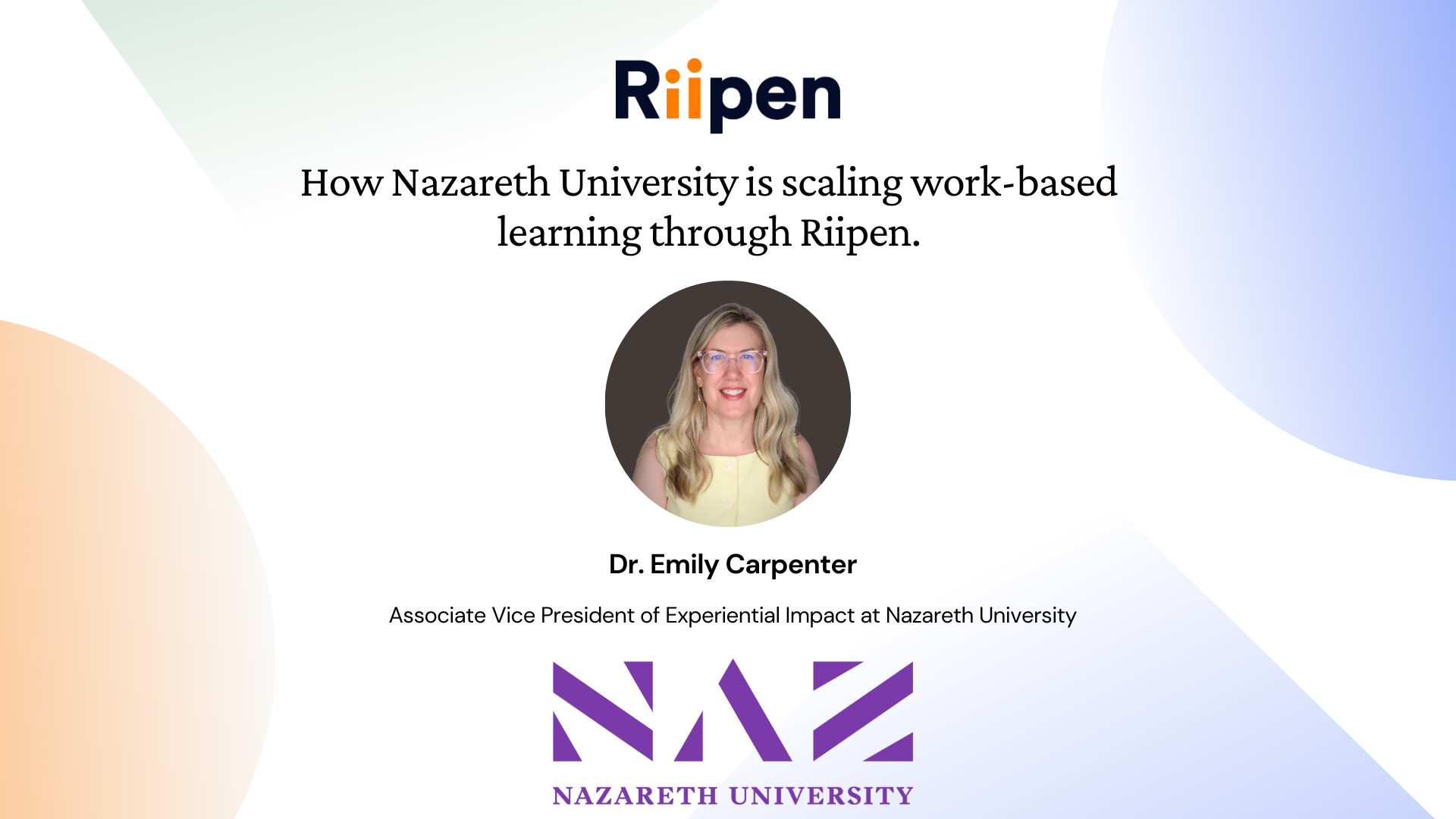Representing the real world: Dr. Linden Dalecki details integrating experiential learning in his classroom

Sitting down with Linden
Dr. Linden Dalecki is an Associate Professor of Marketing and Management at the Kelce College of Business at Pittsburg State University.
Thoughts on experiential learning
Before he was introduced to Riipen, Linden was no stranger to experiential learning. He often used case studies, roleplays, and simulations to enrich his students’ learning outcomes. Textbooks were good at covering the material, but not great at engagement and practice. He feels that work-integrated learning is the most powerful, effective, useful, and engaging form of learning for business and marketing students.
That’s not to say he only uses experiential learning in his classroom - he likes to combine different tools. A lot of case studies were written a long time ago, but there are a few evergreen case study exceptions. This is how he ranks experiential learning engagements: textbooks; case studies; simulations; role-plays; and then experiential learning engagements (i.e. Riipen in-class projects).
A mirror for the real world
On Riipen, Linden feels it represents the real world in a great way. There is an overabundance of good projects for students to work on. He sees the platform as a real marketplace. After he approves the projects, students have the opportunity to choose a client just like they would choose a company to work for.
Just like in the real world, there are a lot of complexities and moving parts on Riipen. Fortunately, this is exciting for him and his students. He enjoys being dynamic.
Lessons learned
The Riipen experience is extremely intuitive and easy. Any place that he stumbled, he was able to reach out to the client success team through chat or email - pretty much a seamless process.
He also appreciated the recommendations engine. Overall, his time pitching to companies and companies pitching to him are evenly split. He approves most of the projects that are proposed to him by companies because he thinks it's fun and enjoys it.
Before the start of a semester, he puts in a solid week and a half of work to get his projects (he typically works with multiple in one class). However, to him, it doesn’t feel like work. He’s learning and expanding his repertoire of knowledge of industries. He takes this knowledge and relates it back to the course curriculum.
Students’ experience
A majority of his students have rave reviews of their experiential learning engagement. Understandably, there are a few students who feel like it’s more work than usual and would rather stick to typical course assignments. He tells his students it's a “baby internship” - the students have the opportunity to apply their knowledge and get experience, but it won't be overwhelming.
Student output can range from professional-level to not so great. Setting expectations with industry partners is super important. Telling them early on to expect some excellent stuff, but also expect a few that won’t deliver at the same caliber. The previous companies that his classes worked with have had reasonable expectations. He only had to reset expectations with course clients once or twice.
One student project involved working with the Scooter’s Coffee team. The students made so many excellent recommendations. Shortly after the class, there is now a Scooter’s Coffee in Pittsburg, Kansas when there wasn’t one before. Although it’s not confirmed, they believe they had some influence in this decision.
Evolving experiential learning
Linden loves to experiment and test different ways to engage his students and provide better learning outcomes. In his current course, he’s experimenting with doing multiple projects on behalf of the same client. He typically works with multiple clients on different projects. In his new experiment, he hopes to see what impact this will have on student engagement and what the dynamic is going to be like with the course client.
Another experiment he will be running is holding off on assigning student teams to their company within the first week. He wants to give the students a chance to speak with the clients first and make sure there is a fit.
Linden shows his passion for education and helping students learn. Along the way, he’s able to try new things and learn some things of his own. A lot of the time, this involves going in there and trying new things out. He’s a great example of someone who benefits from experiential learning. We’re excited to work with Linden and the many other educators who are as passionate about experiential learning as he is!
A huge thank you to Linden for speaking with us and sharing your experience. To learn more about Riipen and how to get started with experiential learning, visit our website and keep up with Riipen on Twitter, Linkedin, Instagram, and Facebook.

About the author
Jan Natividad leads the Marketing team at Riipen. He considers himself a lifelong learner and an advocate for growth. His passion for storytelling extends beyond his work in marketing. Despite (almost) rubbing shoulders with Marion Cotillard at the Cannes Film Festival, he’s just a humble tech enthusiast, avid traveler (pre-pandemic), and proud dog dad.










.png)



























